This March, NISGUA partnered with New Mexico State University to host a week-long exchange between Indigenous undergraduate students and Maya Q’eqchi’, Mam, Q’anjob’al, and K’iche’ environmental defenders. Ten NMSU students visited with NISGUA partners in the Chixoy and Copón Rivers watershed to learn about their grassroots organizing model that builds community-level Indigenous leadership to defend ancestral territories against the imposition of the Xalalá mega-dam. Participants experienced daily life in communities, observed Indigenous leadership in action, and shared about their people’s struggles for sovereignty and social and ecological justice in the U.S.
This delegation culminated a year of organizing to build relationships between Indigenous water protectors in Guatemala and the U.S., and served as a direct follow-up to our fall speaking tour, “How to Stop a Dam with Indigenous Resistance.” It was also our first delegation to focus exclusively on facilitating direct exchange between Indigenous leaders — a dream originally conceived by NISGUA member and co-organizer of the exchange, Kayla Myers (Eastern Shoshone Descendant), when she was an accompanier with our Guatemala Accompaniment Project.
We are deeply grateful to Kayla Myers, NMSU, and our partners in ACODET (Association of Communities for Development and the Defense of Land and Natural Resources) for their generosity, vision, and collaboration, and to all our grassroots donors who made this exchange possible. To learn more about our partners in ACODET, read our 2018 profile on their decade plus struggle and watch their recent press conference presenting an international statement on Indigenous self-determination and the right to consultation.
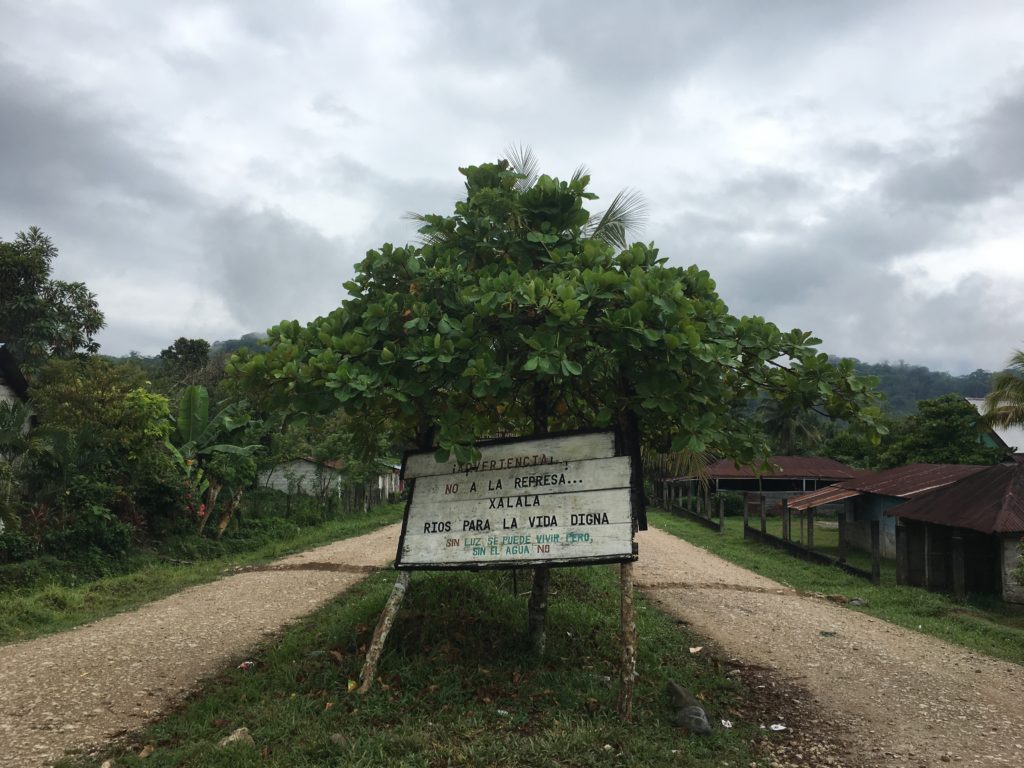
A sign in Copal AA reads: “Warning! No to the Xalalá Dam. Rivers for dignified life. Without electricity there is life, but without water there is not.”
Getting Ready to Go
In the months leading up to their departure, students gathered at the NMSU campus in Las Cruces, where Kayla works as a Senior Program Specialist for Indian Resources Development, to get to know one another, to discuss their hopes for the exchange, and to begin their learning about Guatemalan history and social movements. This work included a screening and discussion of Skylight Pictures’ 500 YEARS using NISGUA’s Grassroots Cinema Toolkit and facilitated reflections on Indigenous People’s rights and the importance of transnational solidarity. The delegates also volunteered at a church in Las Cruces, where recently detained immigrants, many of them Indigenous and Guatemalan, were released by ICE with no access to food, shelter, or other basic resources and services.
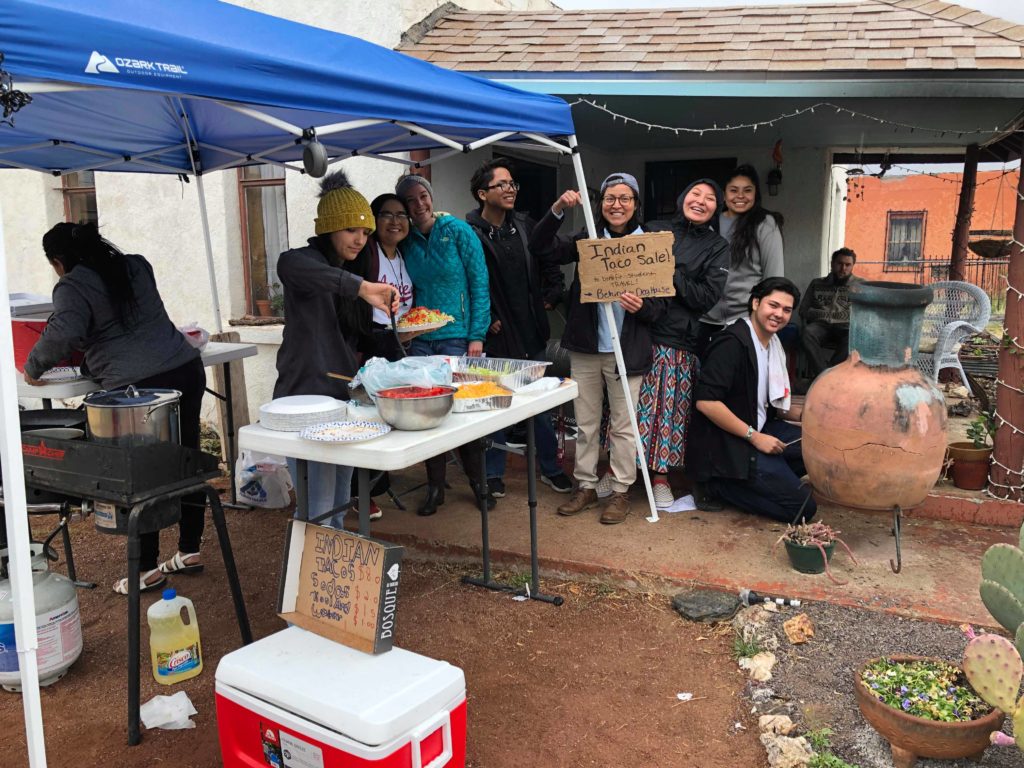
The delegates sell Navajo Tacos to fundraise for their trip expenses. Photo credit: Chantelle John
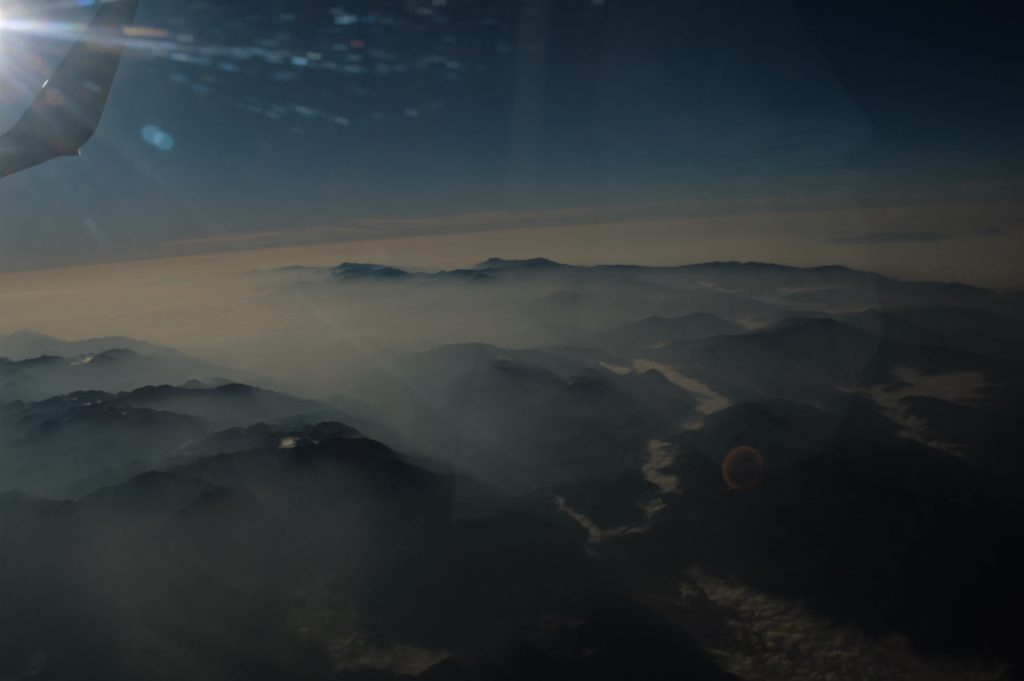
Delegate Buffy Charley captures mist-covered mountains on the flight to Guatemala City. Photo credit: Buffy Charley
Day 1
After a long flight on Saturday, delegates settled into their hotel and had a welcome dinner in Guatemala City. The next day started with a workshop on decolonization frameworks co-facilitated by NISGUA and NMSU staff, and a visit to Casa de la Memoria, where delegates learned about 500 years of Indigenous resistance and survival in Guatemala. In the afternoon, we met with Maudi Liset Tzay Patal, Maya Kakchiquel community social psychologist and 2016 NISGUA tour speaker, to talk about how her work allows her to practice Indigenous leadership and support the leadership of survivors of violence.
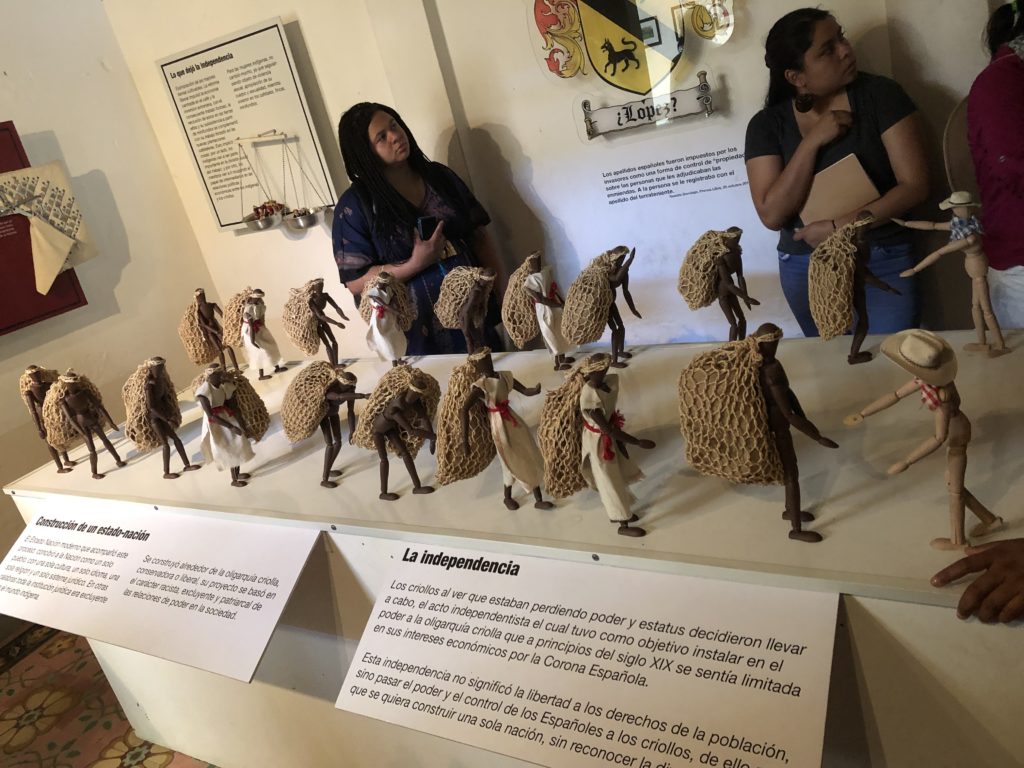
Delegates learn about the racist history of Guatemalan “Independence” in the Casa de la Memoria. Photo credit: Chantelle John
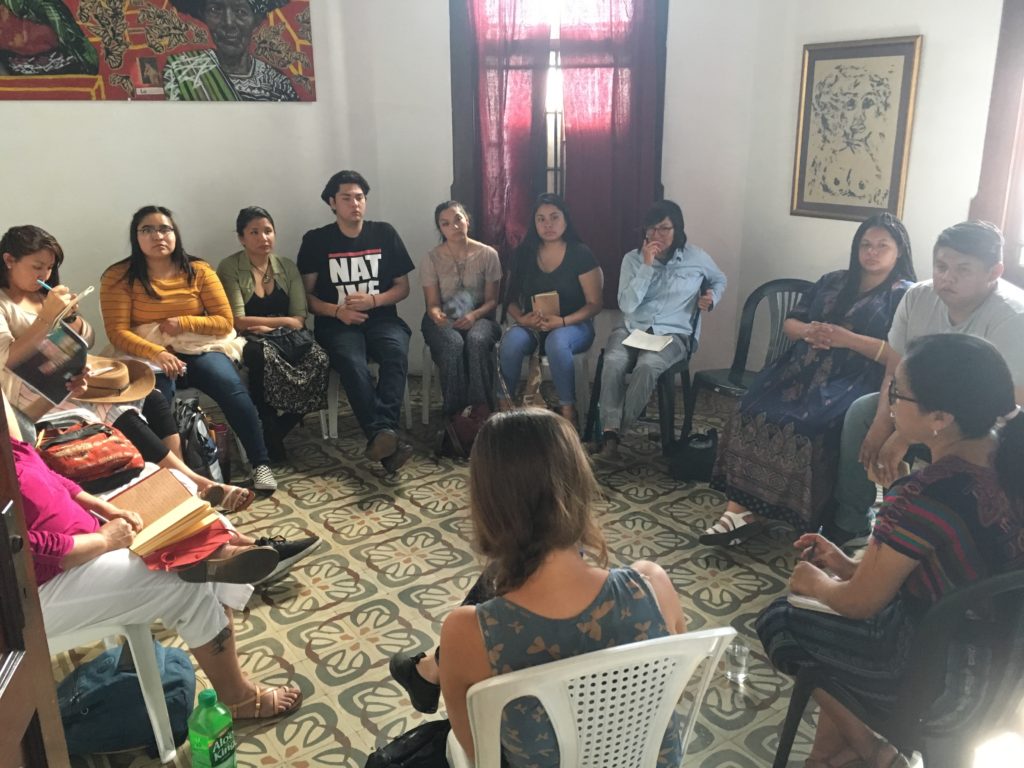
The group listens to Maudi Tzay speak about Indigenous leadership.
Day 2
On Monday morning, we met our driver, Ardámi, and journeyed 10 hours in a van to Copal AA La Esperanza, located in the far north department of Alta Verapaz. We were greeted with fresh coconuts and a warm welcome from community leaders, including Indigenous mayors, ACODET organizers, and members of the Community Development Councils. After dinner with host families, students met with the Grand Council of Ancestral Authorities to discuss ceremonial practices and hold vigil over offerings brought to Copal AA by the students. Students shared about ceremony in their communities and noted similarities and differences across cultures.
Day 3
On Tuesday, we traveled by boat down the Chixoy River to Ixcán and hiked for forty minutes through the hills to Las Margaritas Copón. Here, students learned about Indigenous community organizing, leadership structures, and how communities respond to problems and threats in their territory. NMSU students shared about their communities and cultures in English and/or their native languages, contributions which were translated into Spanish and Q’eqchi’.
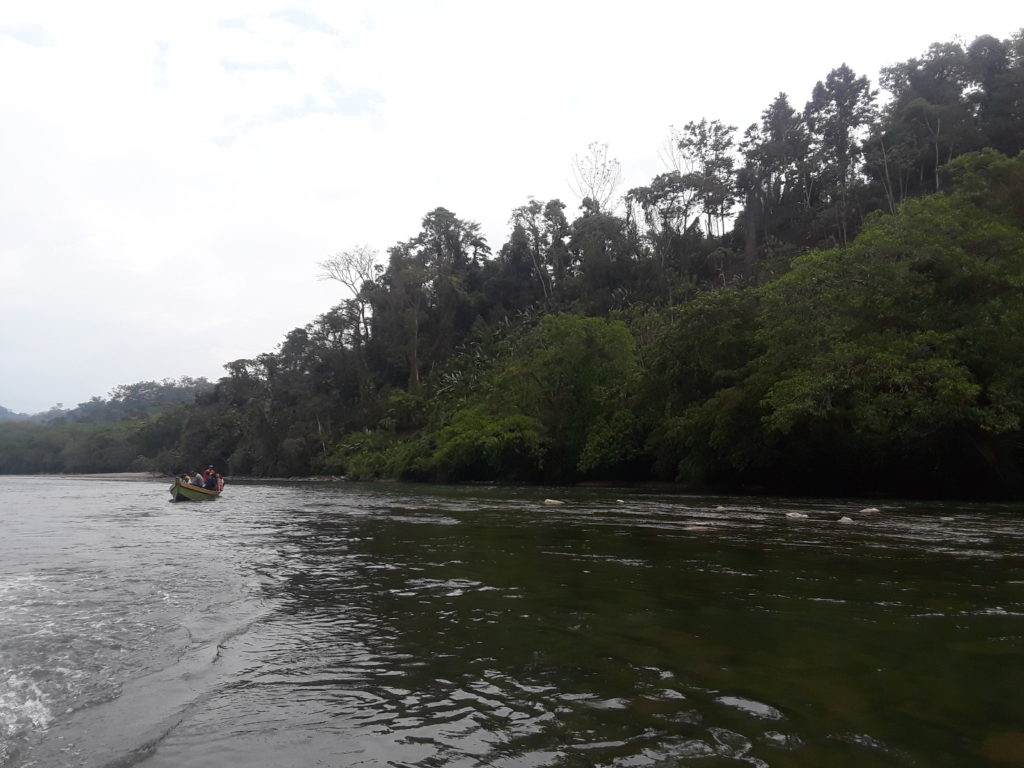
A boat filled with delegates and community members in the Chixoy River.
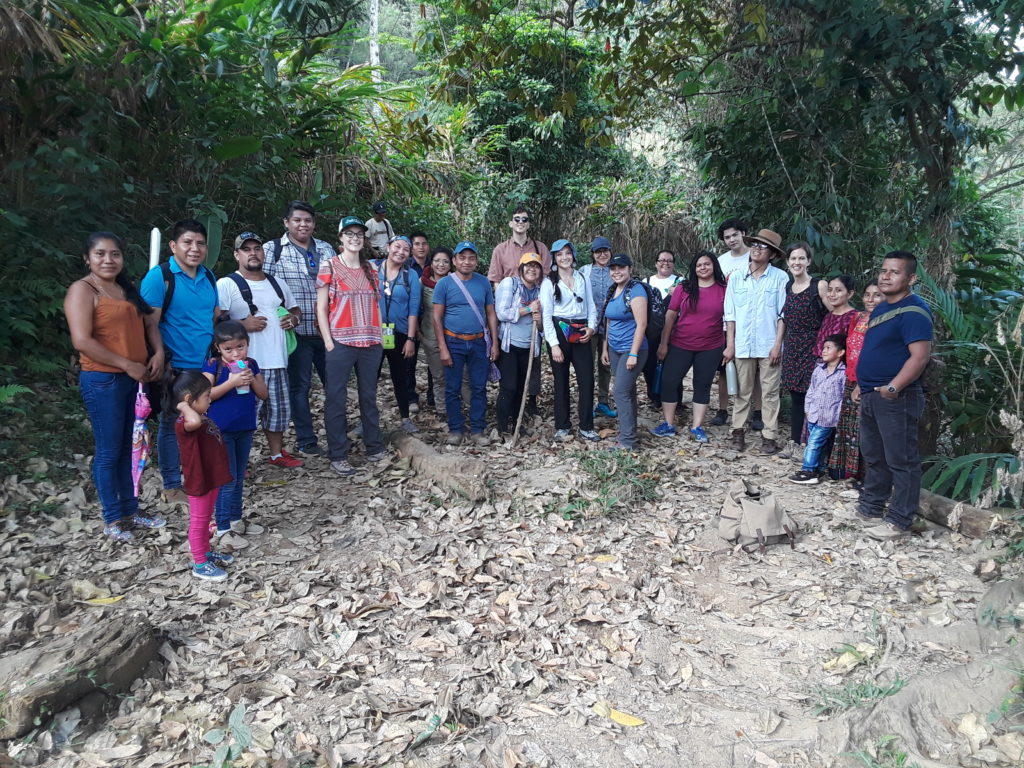
The delegation and community members walk from the Chixoy River to Las Margaritas Copón.
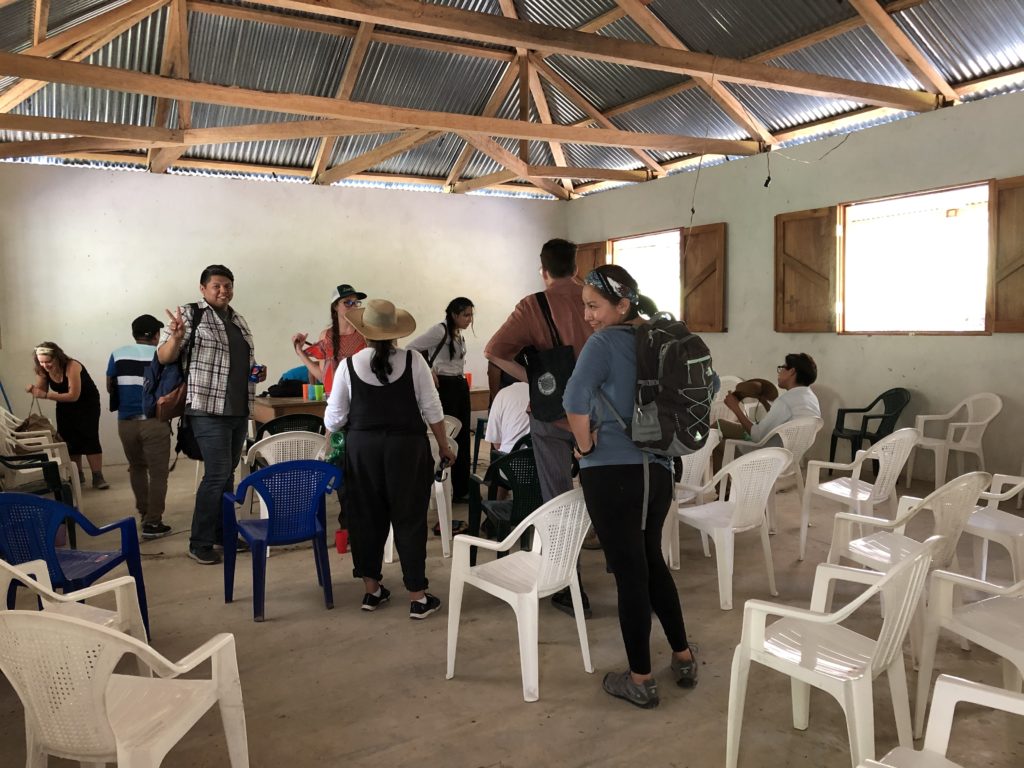
The group gathers in the ACODET office. Photo credit: Chantelle John
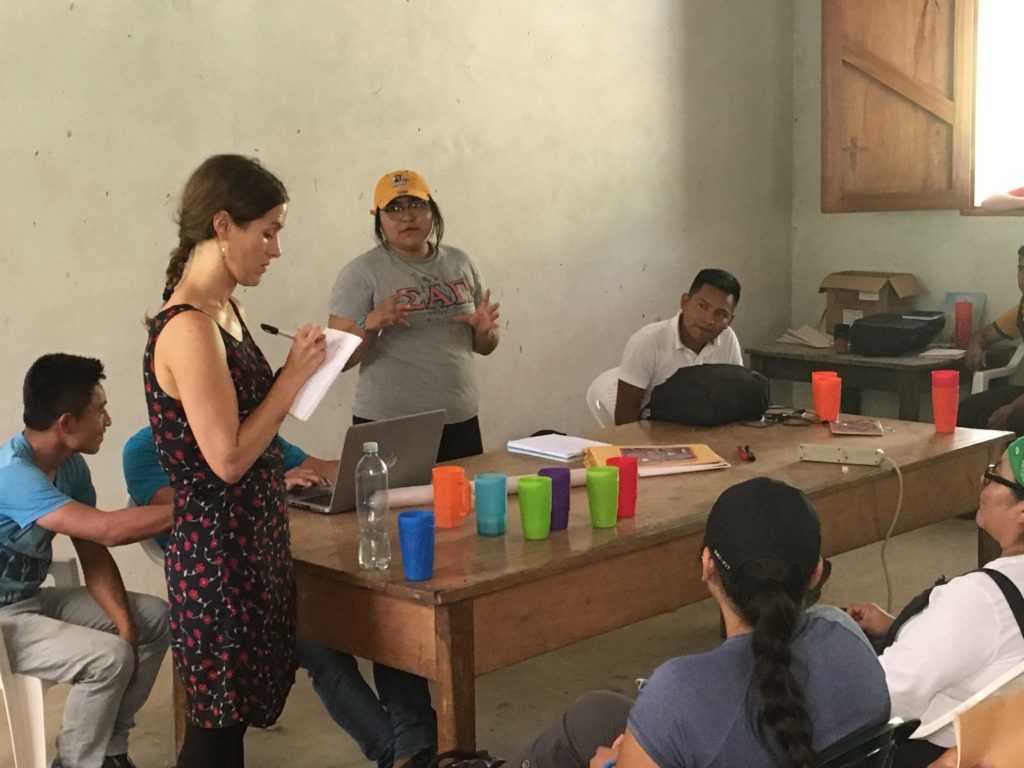
Delegate Chantelle John shares about the struggle for justice in her community while Spanish- and Q’eqchi’-language interpreters take notes.
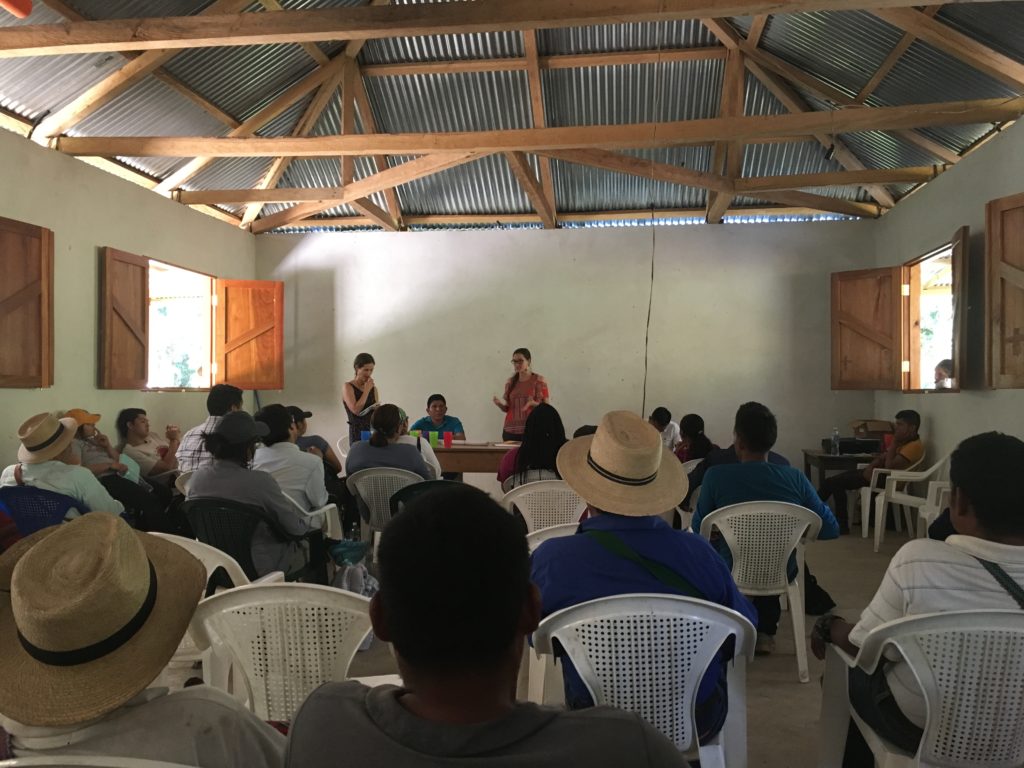
Community leaders listen to Kayla Meyers speak about the crisis of Missing and Murdered Indigenous Women in the U.S. and efforts to protect Indigenous women everywhere.
Day 4
On Wednesday, students participated in an Indigenous language exchange at the local elementary and high school in Copal AA. High school students prepared music and political theater highlighting the role of education in preserving Indigenous identity and environmental defense. Students and families welcomed our group with offerings of jewelry and fruit.
In the afternoon, we learned about the history of resistance to the Xalalá Dam and the founding of Copal AA by returned refugees of the Mayan genocide, which included presentations from all sectors of the organization and community. Students asked questions about the intersections of Indigenous language and culture, community organizing, and environmental defense.
In the evening, the ancestral authorities invited us to participate in a ceremony for the Nahaul Kej, which included fire offerings from delegates. Out of respect for and in compliance with ceremonial norms, no photographs were taken.
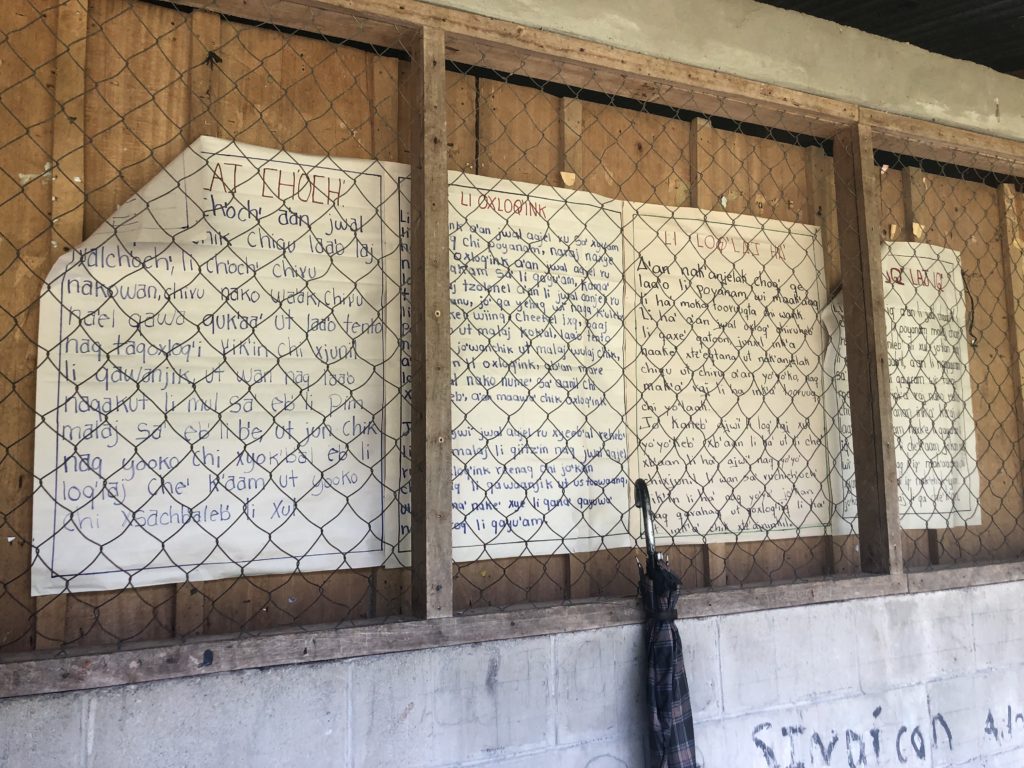
Signs in Mayan languages hang in the school in Copal AA. Photo Credit: Anna Benally

Diné delegates hold their flag representing the Navajo Nation outside of the Copal AA school. Photo credit: Chantelle John

The Copal AA high school features art depicting the community’s history and principles. Photo credit: Chantelle John
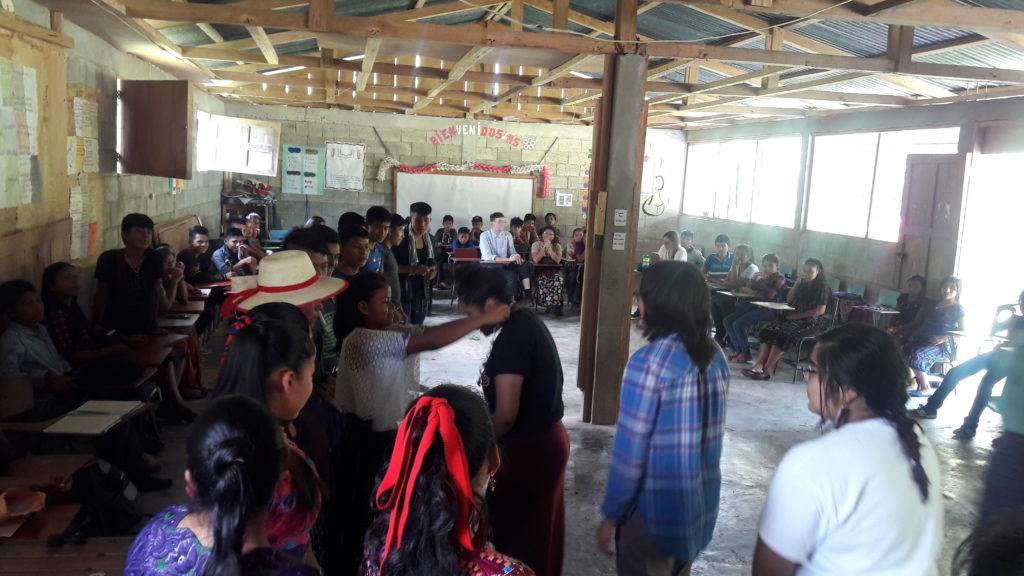
Students from Copal AA gift the delegates necklaces after their presentations.
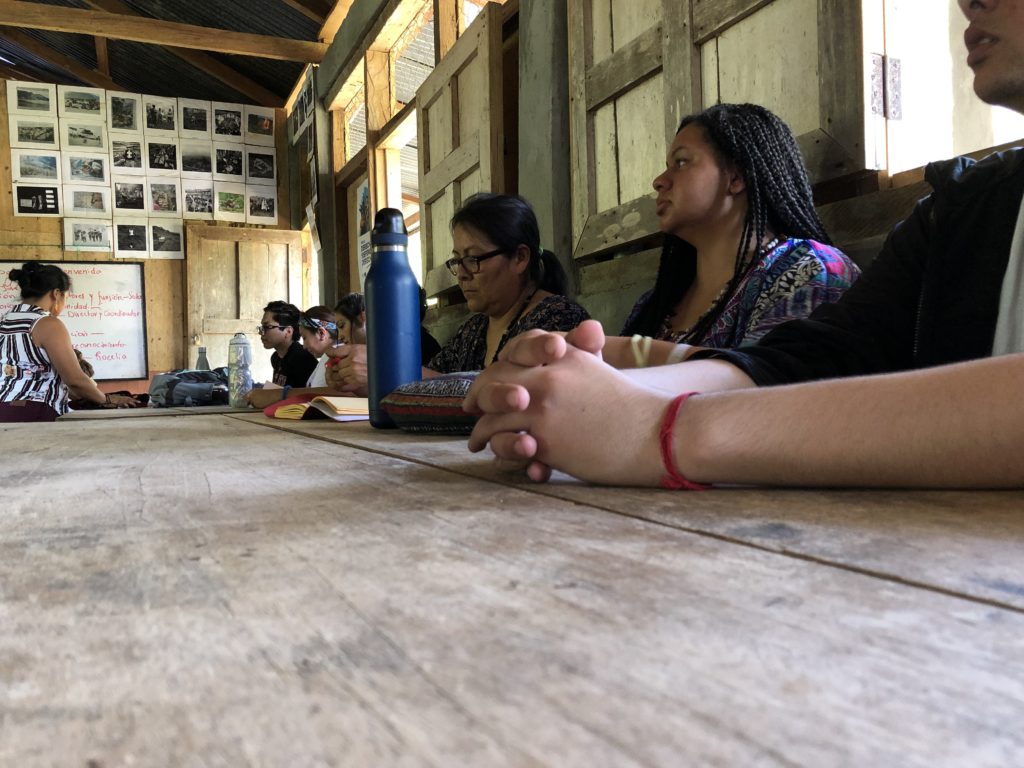
Students listen to community leaders tell the story of Copal AA’s founding. Photo credit: Chantelle John
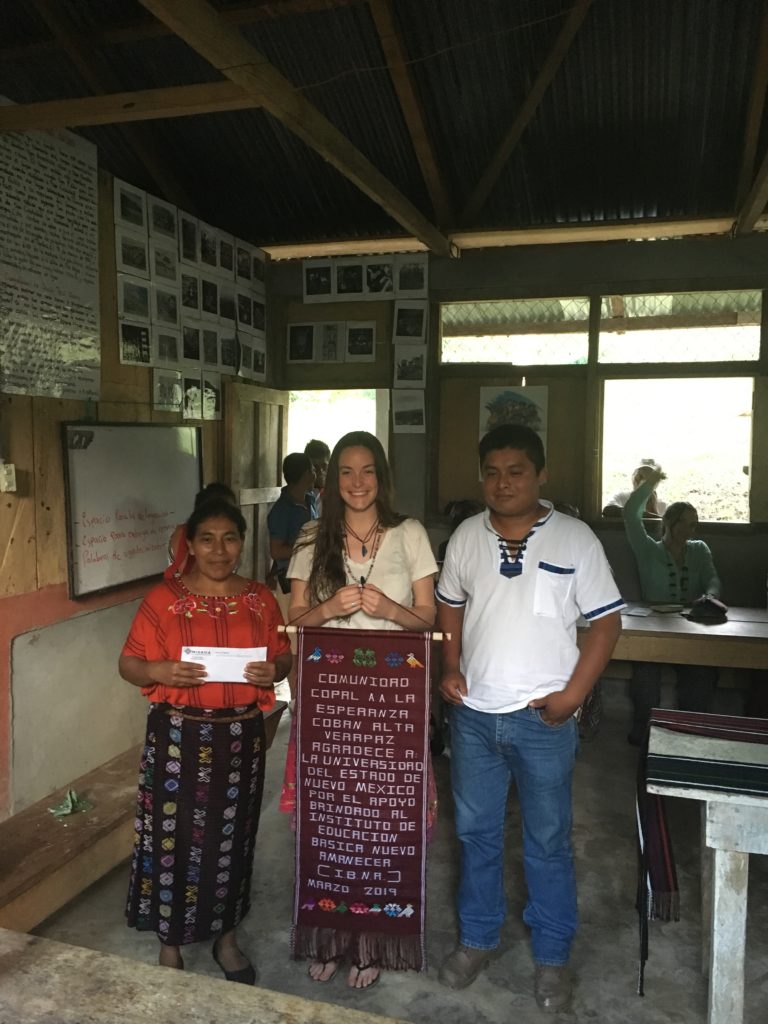
Kayla poses with members of the local Community Development Committee (COCODE), Fabiana and Enrique, holding Copal AA’s gift to the delegation.
Day 5
On our final day in Copal AA, we went to the local artisans’ market, where we learned about the role of agriculture and craft in the local economy. Following a warm community farewell and invitation to return, we got back in the van and headed back to Cobán for rest and reflection in the cloud forest.
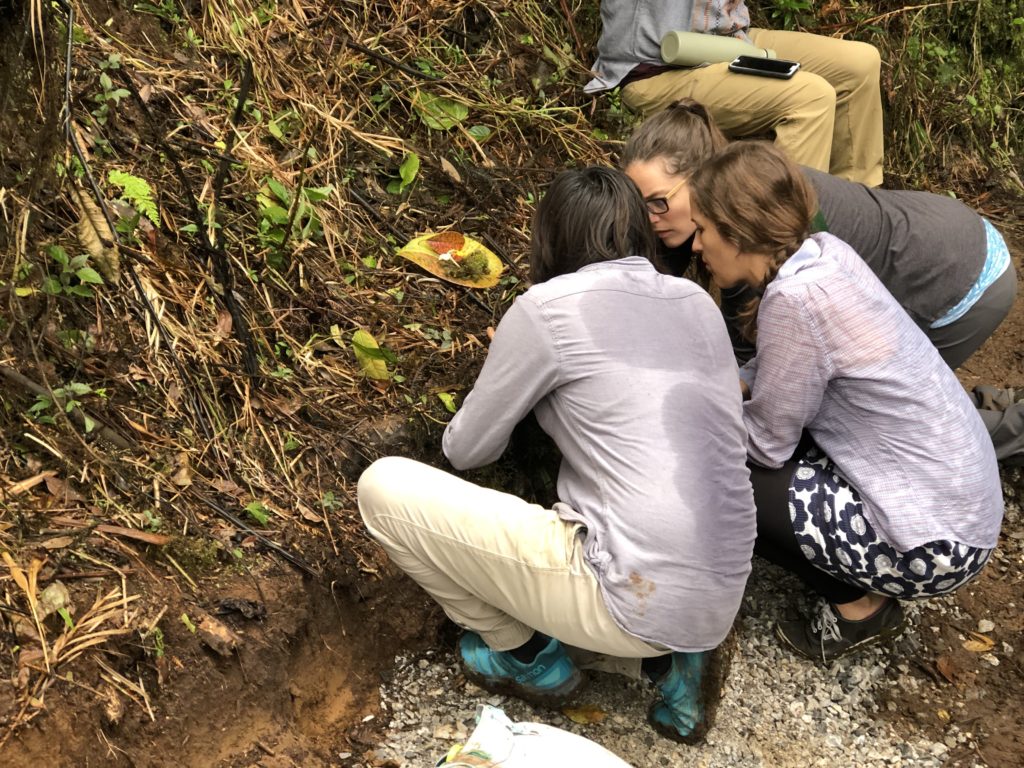
A delegate and two facilitators look at new life forms on a forest path. Photo credit: Anna Benally
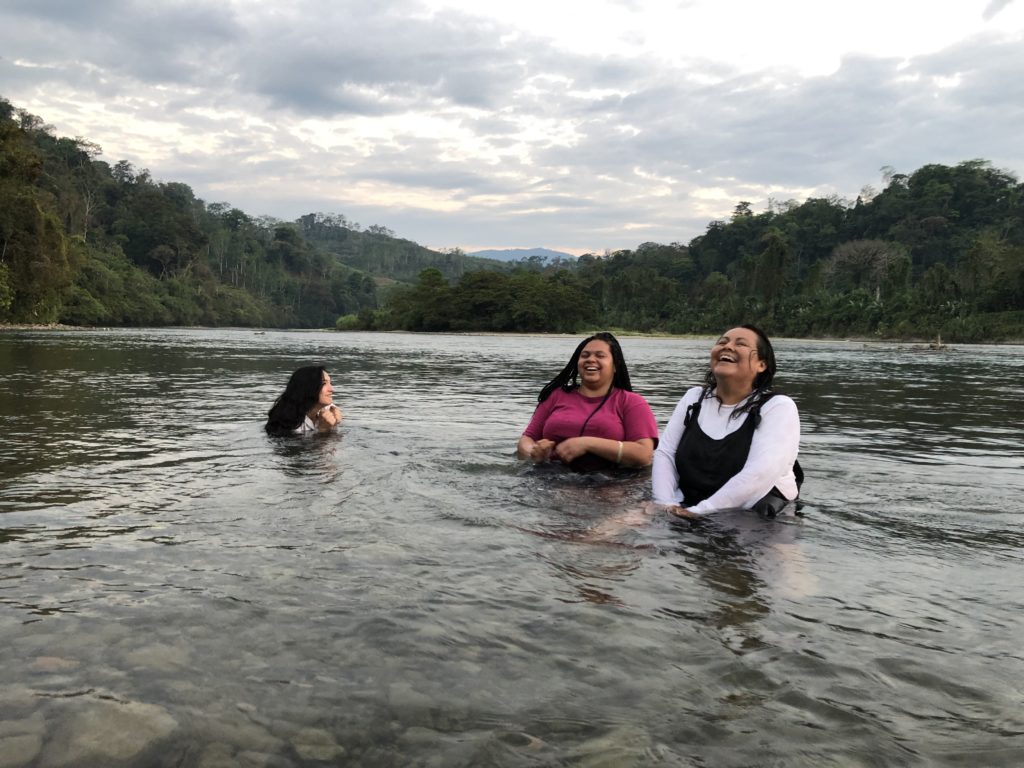
Delegates Adrienne, Toteona, and Kori laugh in the Chixoy river. Photo credit: Chantelle John
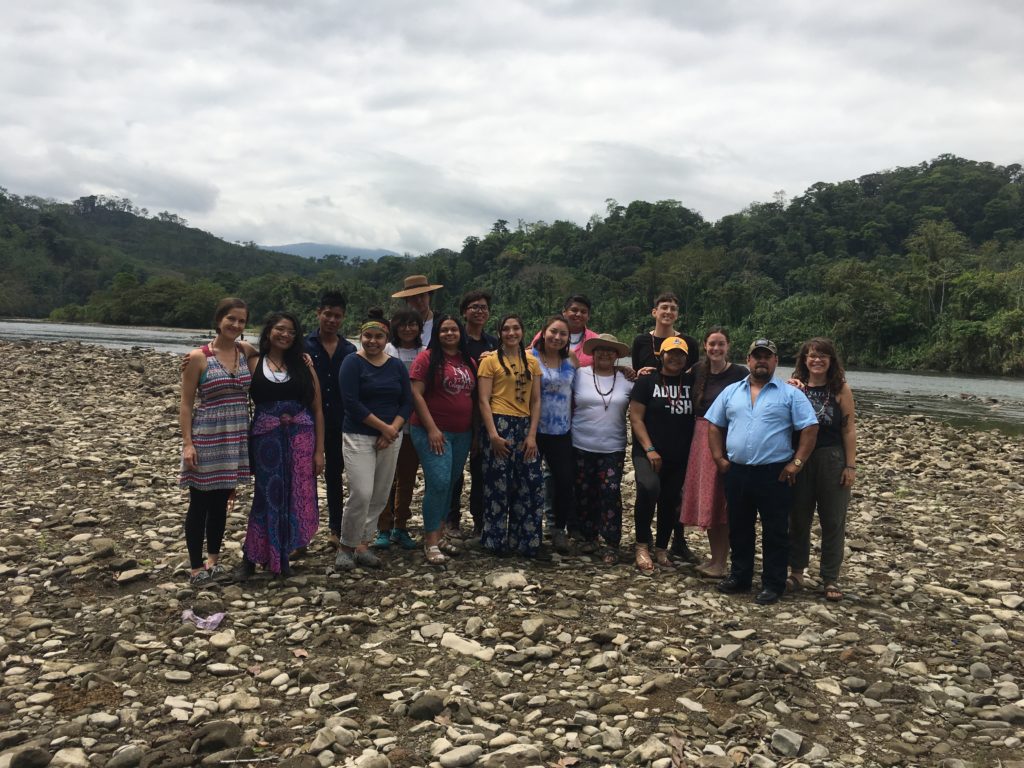
The whole group says goodbye to the Chixoy River and the Copal AA community before our bus trip back to the capital.
Day 6
Before heading back to the capital, we enjoyed a day of hiking, reflection, integration, and planning for next steps in New Mexico. On this day, delegates had the opportunity to reflect on the impact the delegation had on their learning, their activism, and their leadership, while considering what long-term solidarity with Guatemalan water protectors could look like back home.
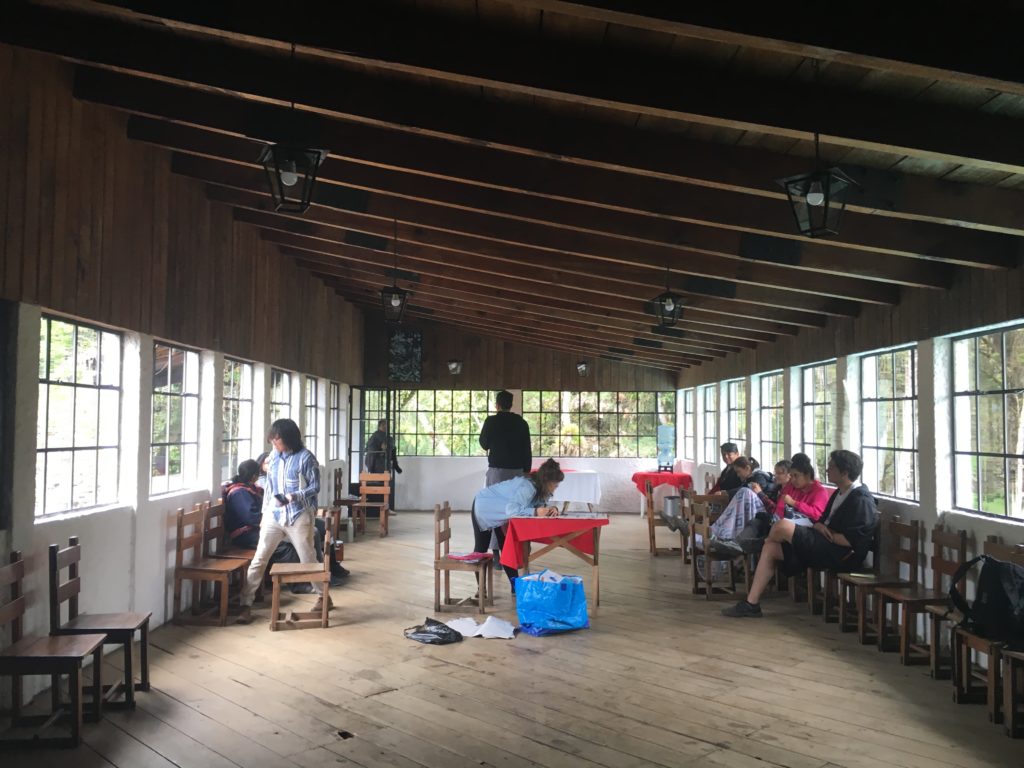
The group gathers to reflect and dream together in the cloud forest.
Delegate Reflections
“My takeaway is the power of community. The beauty of a community built in common demands, which ensures accountability, flexibility, and an equal distribution of power through formed groups that represent the entire community was art in motion. It was overwhelmingly empowering and restored my hope for my own community. The words of the elders will continue to be a foundation stone in my own life that I will continue to reflect upon to restore my spirit and remind me of the power of community through organization. I am eternally grateful.” – Kori
“This journey to Guatemala was impeccable and the experience elicited emotions that are partially inexpressible. Some of the stories that were shared are for those ears who heard it only, but were experiences that when I find myself embraced by mother nature, listening to her songs, I will recall will clarity. Throughout this experience I felt a multitude of varying emotions, including but not limited to fear, anger, hope, inquisitiveness and bliss. The sights, smells, aura, and life stories are a reflection of perseverance and survival. Tengo sangre indígena pero no soy indígena en mi cara ni en mi vida. Despite this, the community welcomed me like family, and for this I am forever grateful.” -Toteona
“What an empowering and incredible experience it was to be in Guatemala, and most importantly learn from and be welcomed by the indigenous Maya communities. We did many things, explored many places, and ate many, many, many tortillas. I am honored to have been a part of the first Indigenous Environmental Leadership Exchange and owe the most gratitude to the facilitators for making this trip meaningful and astonishing for us all. The Maya are a beautiful and gracious group of powerful and strong people that have been living in resistance, living in the struggle to protect their territory against forced removal by the US and Guatemalan governments for extraction of minerals and the construction of hydroelectric dams along their river. There has been a history of removal and genocide within indigenous Mayan communities and we stand in solidarity with them to say no, we have the right to our land that our ancestors have lived on for hundreds of years and will continue for generations more. Thank you thank you thank you, it was the best time of my life.” -Adrienne
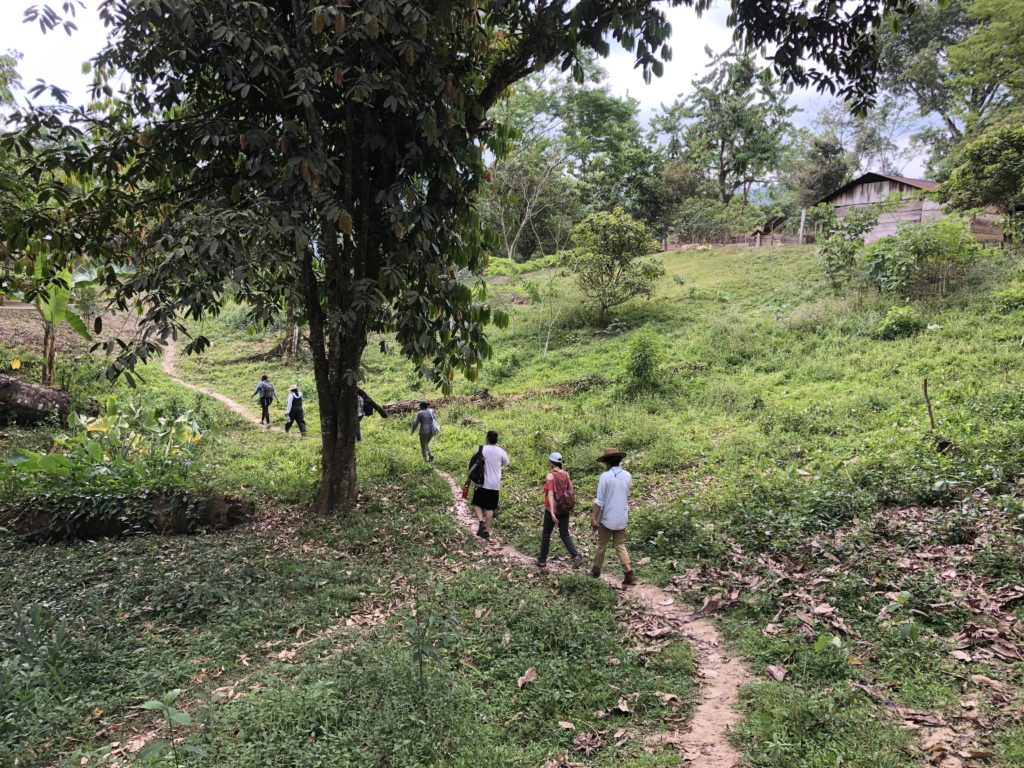
Several delegates walk up a path in Las Margaritas Copón. Photo credit: Chantelle John
Stay tuned & help us continue this work
Kayla and students are currently in the early planning stages of a fall event series at the university entitled “Indigenous Symposium: Land Protection,” which will include participation from a Guatemalan land defender and a report-back from the group on their trip and what they learned. Delegates will also share their learning at a summer program for native high school-aged youth.
“In 2016, when serving as a human rights accompanier in the Ixcán region, I stood on a sacred site with an ancestral authority of the Copal AA community as he explained the history and hopes of that land. His teachings had become a source of healing and transformation for me, and, then and there, the prayer of bringing Indigenous Youth from the North to experience this journey was born. International Indigenous exchange is a vital strategy for healing ancestral relationships that were born long before borders, for strengthening Indigenous movements across the Americas, and for decolonizing. This delegation was the fulfillment of the legend of the condor and the eagle; the prophesy that our brothers and sisters from south to north would come together and rise in unison. After finishing a Maya ceremony on that same land in Copal AA in March of 2019, the ancestral authority put his hand on my shoulder and said “I remember that day, and now you are here with us.” The students and I became part of a global Indigenous family, with all the encouragement, ideas, support, healing and richness that this family brings.” – Kayla Myers
NISGUA is committed to leveraging our position as a bi-national organization to facilitate and strengthen ties between environmental and social justice movements in both the U.S. and Guatemala, particularly those led by Indigenous people. We believe that our political moment calls for strong, internationalist leadership that centers those most directly impacted by systems of violence and oppression. Together, we can play an important role in facilitating cross-border relationships that strengthen our movements and move us toward collective liberation!
Do you have a proposal for an international gathering or exchange that NISGUA could facilitate? Reach out to claire[at]nisgua.org and let’s dream together!
Can you make a gift dedicated to horizontal exchange and capacity building? We’re almost entirely funded by small, grassroots donors. We can’t continue this work without you — please donate today!
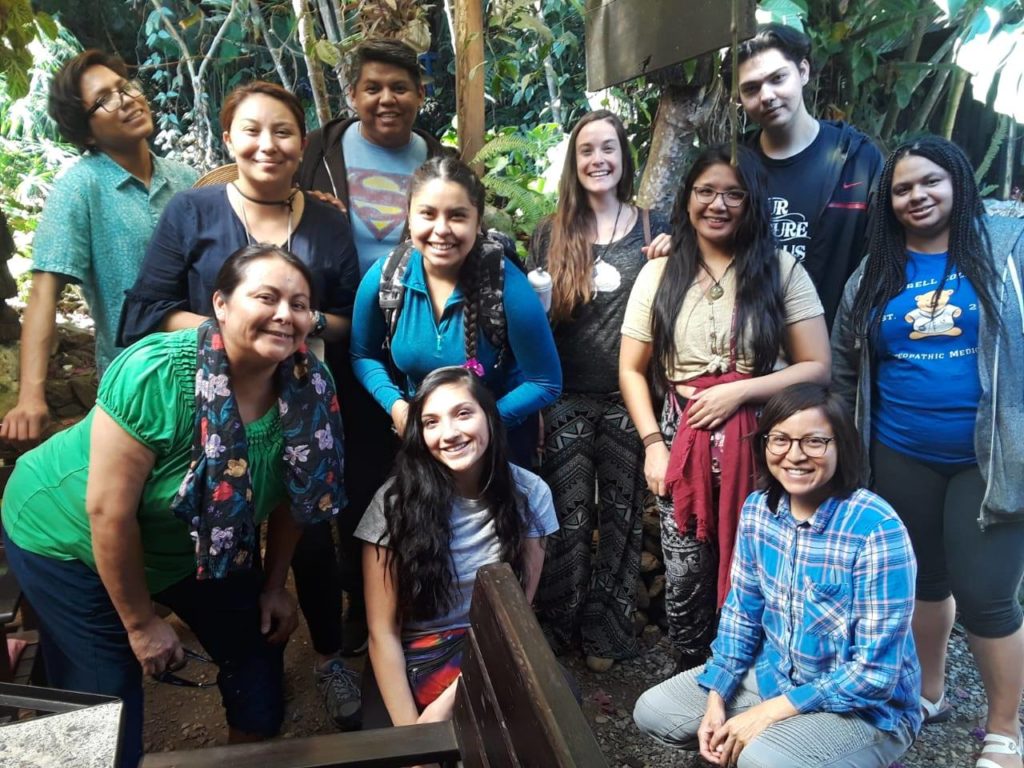
Thank you to the delegates, organizers, facilitators, donors, and NMSU for making this opportunity for Indigenous direct exchange possible!

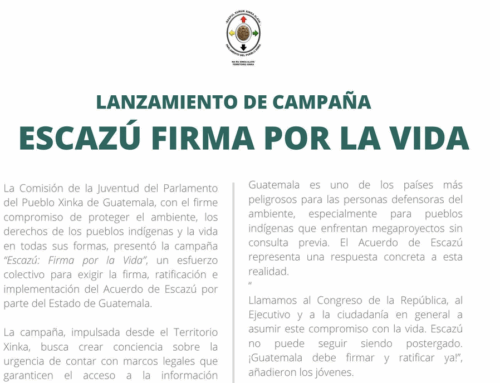


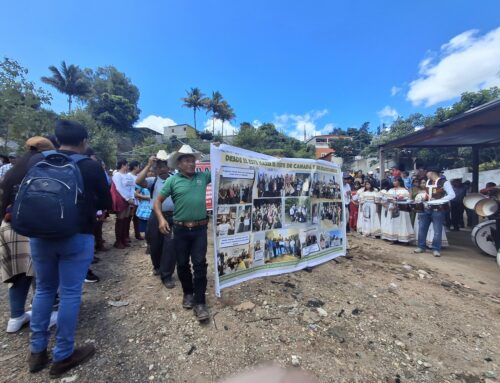
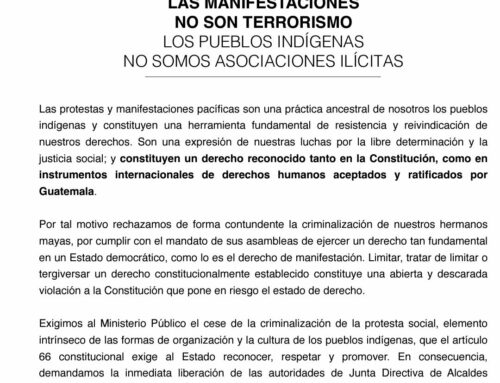
Leave A Comment